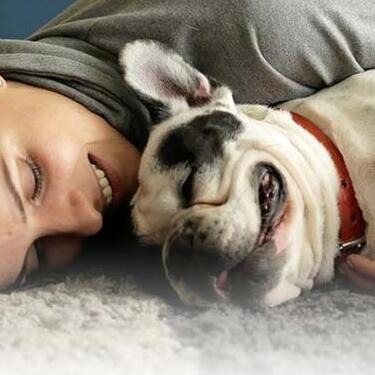
-
Find the right food for your pet
Take this quiz to see which food may be the best for your furry friend.
Find the right food for your pet
Take this quiz to see which food may be the best for your furry friend.
Featured products
 Adult Healthy Cuisine Roasted Chicken, Carrots & Spinach Stew Dog Food
Adult Healthy Cuisine Roasted Chicken, Carrots & Spinach Stew Dog FoodDelicious roasted chicken paired with tender vegetables in a succulent stew
Shop Now Small & Mini Savory Stew with Chicken & Vegetables Dog Food
Small & Mini Savory Stew with Chicken & Vegetables Dog FoodA delicious complement to the nutrition of Science Diet Small & Mini 7+ dog food
Shop Now Adult 7+ Perfect Digestion Chicken, Whole Oats & Brown Rice Recipe Dog Food
Adult 7+ Perfect Digestion Chicken, Whole Oats & Brown Rice Recipe Dog FoodScience Diet's breakthrough nutrition supports ultimate digestive well-being & healthy microbiome for dogs age 7+
Shop NowFeatured products
 Adult 7+ Senior Vitality Chicken & Vegetable Stew Cat Food
Adult 7+ Senior Vitality Chicken & Vegetable Stew Cat FoodImproves Everyday Ability to Get Up & Go
Shop Now Adult 7+ Tender Tuna Dinner Cat Food
Adult 7+ Tender Tuna Dinner Cat FoodWith delicious chunks in a decadent gravy
Shop Now Adult Savory Entrée Can Variety Pack Cat Food
Adult Savory Entrée Can Variety Pack Cat FoodPrecisely balanced nutrition with the delicious taste of savory minced chicken to help fuel the energy needs of cats during the prime of their life
Shop Now -
Dog
- Dog Tips & Articles
-
Health Category
- Weight
- Food & Environmental Sensitivities
- Urinary
- Digestive
- Joint
- Kidney
-
Life Stage
- Puppy Nutrition
- Adult Nutrition
- Senior Nutrition
Cat
- Cat Tips & Articles
-
Health Category
- Weight
- Skin & Food Sensitivities
- Urinary
- Digestive
- Kidney
-
Life Stage
- Kitten Nutrition
- Adult Nutrition
Featured articles
 Do Dogs and Cats have Belly Buttons?
Do Dogs and Cats have Belly Buttons?Learn whether cats & dogs have belly buttons like humans, what the function is, and if there are any health concerns associated with it.
Read More Why Are Dogs and Cats So Cute?
Why Are Dogs and Cats So Cute?If waggy puppy dog tails and furry kitten yawns make you swoon, you're not alone. Why are cats so cute? And, dogs too! Let's find out!
Read More Does My Pet Hate Me?
Does My Pet Hate Me?Learn tips for bonding with your pet if you've ever thought, 'My dog doesn't like me, or 'Why do I have a standoffish cat?'
Read More -


Can dogs get splinters? Even though their paw pads are pretty tough, they can still be penetrated by thorns and splinters of wood, glass, metal or any other hard, sharp material. Dogs may be so focused on sniffing, playing or chasing a ball that they might not see sharp hazards that can end up as a splinter in a dog's paw.
Paws aren't the only body part that are at risk for splinters. Dogs don't tend to discriminate when they are chewing on something fun or delicious (they are missing that whole prefrontal cortex logic part of the brain), so they can sometimes end up with bone splinters stuck in their mouths.
Here's a look at how you can figure out if your furry friend has a splinter and what you can do to help them.
Signs Your Dog Has a Splinter
Now that you indeed know that dogs can get splinters, it's important to know the signs. If your dog suddenly starts limping, don't panic! It could be a simple splinter, thorn or insect sting. If you notice your dog is excessively licking or chewing at a paw or other body part, it could also be a splinter. If your dog is pawing at their mouth, drooling, refusing to eat, chewing only on one side or suddenly head shy, there could be a splinter in their mouth.

What to Do if You Notice a Splinter in a Dog's Paw
If you can see the end of the splinter poking through the skin, there is a good possibility that you can remove it yourself quickly and easily, provided your dog will let you. Remember — safety first! Even the nicest dog can bite if they're in pain. If you attempt this, make sure you don't push the splinter farther in. Don't be afraid to trim the hair around the splinter to make it more visible. Using tweezers (the ones from first-aid kits are the best for this kind of work), firmly grasp the end of the splinter. You want to pull it out slowly and smoothly to avoid breaking off any part of the splinter under the skin. Make sure to pull in the direction of the splinter and not up and out, as this has a tendency to break the splinter. After you remove the splinter, use a cotton ball or swab to apply some dog-safe antiseptic to the wound; talk to your veterinarian to get their recommendation for the safest antispeptics for your dog.
If the splinter is completely embedded under the skin or not visible to you, do not try to extract it. Doing so may cause stress and injury to you and your pet. You can try soaking your dog's paw in a bowl filled with a warm Epsom salt solution for five to ten minutes. Doing so may soften the area and bring the splinter close enough to the surface of the skin so that you can see it and grab it. You might also want to enlist the help of a friend or family member to help hold your dog to keep them relaxed and free you up to concentrate on getting the splinter out. Again — safety first!


Tasty Tips
When to See a Veterinarian
While a splinter is usually nothing to worry about, there are some situations where it's best to let your vet take care of a splinter. A vet needs to get involved if your dog:
- has a splinter in their mouth.
- has a splinter (anywhere) that doesn't come out in 24 hours.
- becomes agitated when you try to remove the splinter.
- is limping or licking the affected area.
- has an infection that appears to be forming.
Don't panic! Enlist the help of your friendly neighborhood vet who can extract the splinter, keep everybody safe and manage pain and stress.
Dogs can get splinters just like humans, but knowing how to spot the signs of a splinter and take care of it promptly can help keep your pup happy, healthy and splinter-free.


Dr. Sarah Wooten graduated from UC Davis School of Veterinary Medicine in 2002. A member of the American Society of Veterinary Journalists, Dr. Wooten divides her professional time between small animal practice in Greeley, Colorado, public speaking on associate issues, leadership, and client communication, and writing. She enjoys camping with her family, skiing, SCUBA, and participating in triathlons.
Related products

Delicious braised beef paired with tender vegetables in a succulent stew

A delicious complement to the nutrition of Science Diet Small & Mini 7+ dog food

Delicious roasted chicken paired with tender vegetables in a succulent stew

Science Diet's breakthrough nutrition supports ultimate digestive well-being & healthy microbiome for dogs age 7+
Related articles

Hill's Science Diet Small & Toy Breed dog foods are designed to meet the nutritional needs for your small dog at every life stage. Learn more here.

Large and giant breed puppies have different nutritional needs than other dogs. Learn how to provide the special care they need to grow up big and strong.

Your dog's coat and skin are a big part of your dog's overall health. Ensure you keep your dog's coat healthy, by following these simple tips.

Learn about choosing the right food for your mature or older dog, ensuring he receives the correct balance of nutrition.

Put your dog on a diet without them knowing
Our low calorie formula helps you control your dog's weight. It's packed with high-quality protein for building lean muscles, and made with purposeful ingredients for a flavorful, nutritious meal. Clinically proven antioxidants, Vitamin C+E, help promote a healthy immune system.
Put your dog on a diet without them knowing
Our low calorie formula helps you control your dog's weight. It's packed with high-quality protein for building lean muscles, and made with purposeful ingredients for a flavorful, nutritious meal. Clinically proven antioxidants, Vitamin C+E, help promote a healthy immune system.

